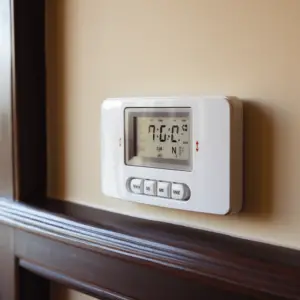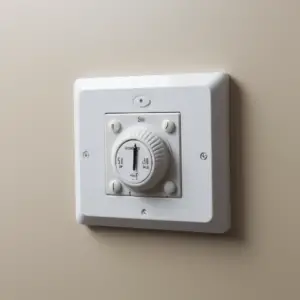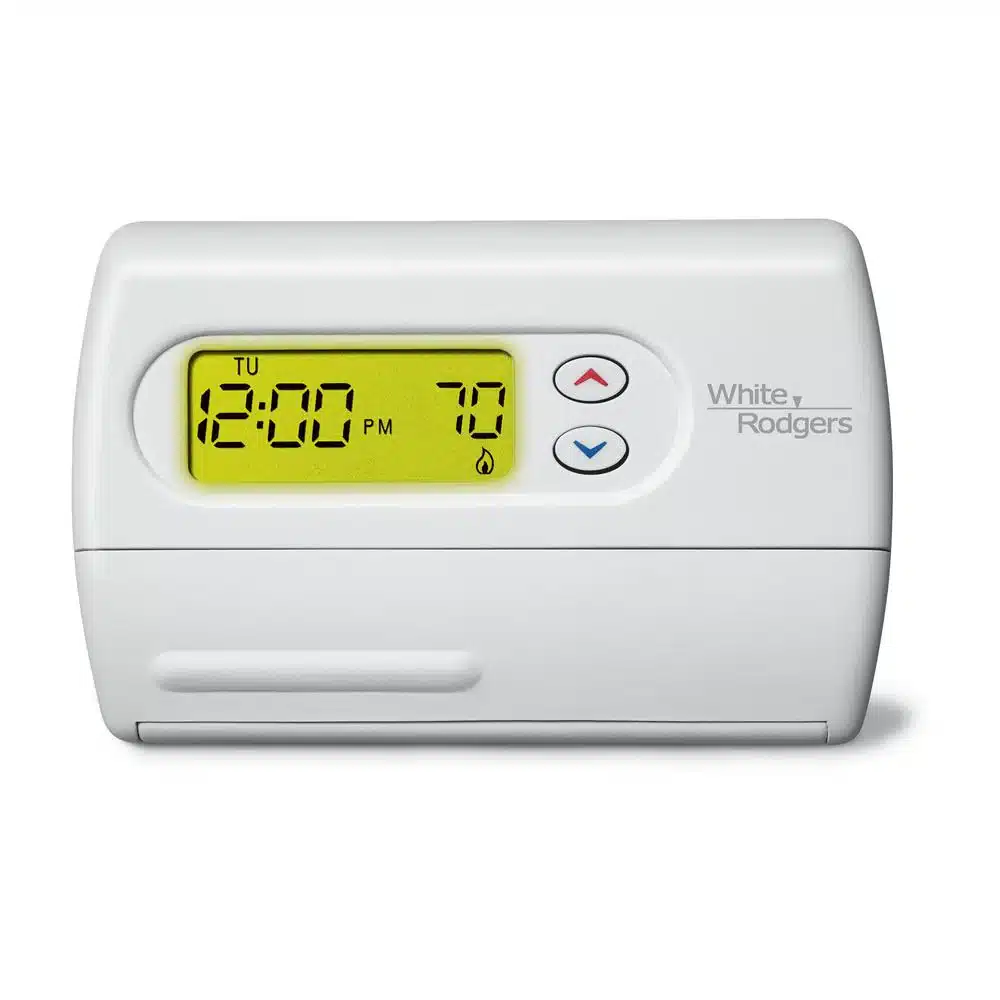A White Rodgers thermostat can be used for a wide range of home comfort operations. It can monitor indoor and outdoor temperatures, allowing your home to adjust for environmental changes. The sensor on the thermostat measures temperature then provides the current measurements to the thermostat to help it make its decisions. This allows your thermostat to determine if it needs to make any adjustments to your HVAC system.
However, the thermostat also comes with its fair share of shortcomings. One of the most reported problems with White Rodgers thermostats is randomly changing, resetting, or restarting. In this article, we’ll look at some of the reasons why this might happen and how to fix it.
Table of Contents
White Rodgers Thermostat Resetting

If your White Rodgers thermostat keeps resetting, it means that it’s programmable, and despite setting your daily and weekly temps, they change to some other pre-defined temperature.
While this might seem like a random occurrence, you will realize that there’s a pattern if you pay close attention to the thermostat. For example, every weekday at 8 pm, the temperature changes to Y, where Y is a constant temperature.
If that’s the case, then your thermostat is resetting. Read on to find out how to fix it.
Thermostat Changing Randomly
If you realize that there is no pattern to the temperature changes, the thermostat is not merely resetting. Most of the time, when this happens, it’s due to a programming error, which is not easy to fix yourself.
Thermostat Restarting
This should be pretty easy to diagnose. However, if you are not looking at the thermostat when it happens, you might not realize that it just restarted. All you might know is that the previous setting is lost. It’s therefore essential to confirm whether your White Rodgers thermostat is restarting before concluding that it’s resetting.
How to Fix a White Rodgers Thermostat Resetting Itself
If your thermostat is resetting at regular intervals, the fix should be pretty straightforward regardless of the model you have.
If your thermostat is programmable, look for the “hold” button. Adjust the temperature manually using the up and down buttons, and then press the “hold” button once. “Permanent Hold” or “hold” should appear briefly on display. This will lock the temperature settings until the next time you change them.
If you have a non-programmable model, the resetting might be caused by a power problem. For example, if it runs on batteries, they might need replacing or might not be making proper contact with the required terminals. Also, if it’s connected to your home’s wiring system, there might be a loose connection or a broken wire.
How to Know if your White Rodgers Thermostat has a Battery
If you’re not sure if your thermostat is battery-powered or wired, fixing it may be difficult. However, recent models are likely wired to the house. Here are all White Rodgers thermostats and their power options.
Blue series 12” touchscreen thermostats- Electrical hardwire with battery backup.
Blue series 6” thermostats- Electrical hardwire with battery backup.
Sensi touch smart thermostat- Electrical hardwire.
80 series and class 80 series thermostats- Electrical hardwire with battery backup.
70 series thermostats- Some use batteries only while others are hardwired.
What to do when a White Rodgers thermostat is stuck on hold
You put the thermostat on “hold” to lock the temperature settings until the next time you reset it. If you want to end the hold and return to your previous settings, press the “Run” button once.
How to Change the Battery on a White Rodgers Thermostat
Most White Rodgers thermostats warn you when the battery is about to die. Usually, the display shows four bars to show good battery health. If there are no four bars or the display shows nothing at all, it might be time to replace the battery. When this happens, follow these simple steps:
-Turn off the thermostat and disconnect it from the wall.
-Remove the back cover to expose the battery compartment.
-Remove the old batteries and dispose of them appropriately.
– Insert the new AA batteries, ensuring that the battery’s negative(-) terminal is in contact with the thermostat’s positive (+) terminal.
-Replace the cover and return the thermostat to the wall
White Rodgers thermostat troubleshooting: no display
If your thermostat display stops showing anything, you won’t be able to view the current temperature. Here are some possible causes of this problem and how to fix it.
Dead batteries
The first thing you should check when your thermostat stops displaying is the batteries. If you haven’t changed them in a while, replace them with new ones and see if it works. You should change your batteries at least once a year to avoid power issues with your HVAC unit.
Tripped circuit break
Models plugged directly into a house’s electrical system may trip the breaker and turn off the thermostat. After replacing the batteries, check for tripped switches.
Faulty thermostat
Sometimes the thermostat will stop displaying due to poor maintenance or wear and tear from aging. Most thermostats have a lifespan of about ten years, after which they start malfunctioning and eventually die.
HVAC unit issues
Sometimes when your HVAC unit has issues, it can prevent the transformer from powering your thermostat. If the fixes above don’t seem to work, call an HVAC professional to check for possible issues.
How to fix the blinking snowflake on White Rodgers thermostats

If the snowflake icon flashes on the thermostat’s display, it’s in delay mode. The thermostat’s lockout feature is trying to prevent the compressor from cycling too quickly. The snowflake should last for about five minutes. If it persists, here is how to fix it.
-Ensure the heater’s door is securely closed.
-Make sure the heater’s power supply is connected, and it is on.
-Check the circuit breaker for tripped switches.
-If the thermostat is new, ensure it is configured correctly to your cooling and heating system.
In conclusion
Before trying the remedies above, read your thermostat manufacturer’s instructions. If you have problems or want to improve your heater’s efficiency, call a professional.


